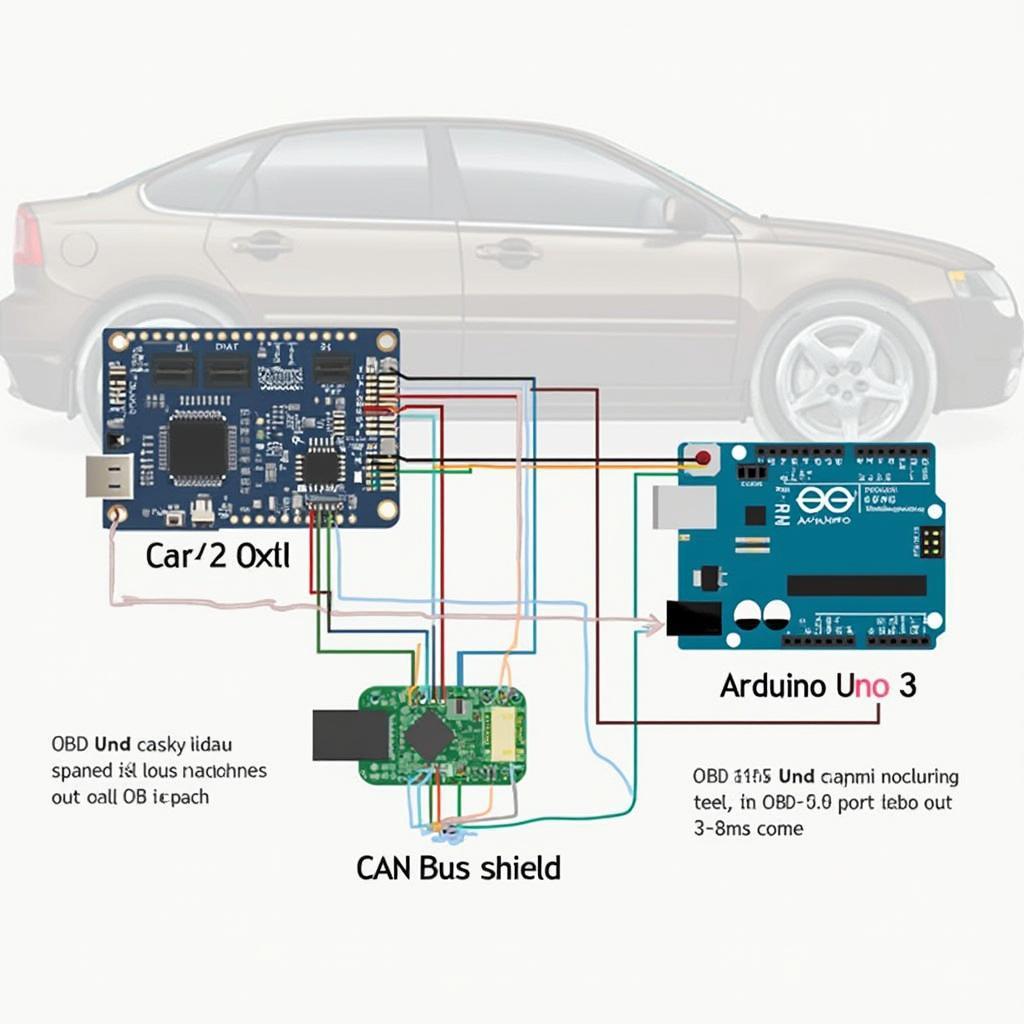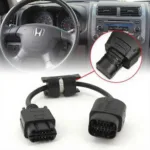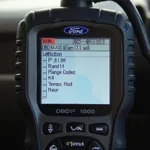Connecting your Arduino Uno R3 to your car’s OBD2 port opens a world of possibilities. This guide provides a complete overview of Arduino Uno R3 OBD2 integration, from understanding the basics to advanced applications and troubleshooting.
Understanding OBD2 and Arduino Uno R3
OBD2, or On-Board Diagnostics, is a standardized system that allows you to access your vehicle’s diagnostic data. This data can range from simple engine speed readings to complex emissions information. The Arduino Uno R3 is a popular microcontroller board known for its versatility and ease of use. Combining these two powerful tools allows for DIY car diagnostics, data logging, and even custom performance modifications.
How to Connect Arduino Uno R3 to OBD2
Connecting your Arduino Uno R3 to your car’s OBD2 port requires an OBD2 adapter. Choosing the right adapter is crucial. While some adapters use Bluetooth or Wi-Fi, for direct connection, a CAN-bus shield and an OBD2 cable are needed. The CAN-bus shield translates the data from the OBD2 port into a language the Arduino can understand.
Connecting the hardware is straightforward. Connect the OBD2 cable to your car’s OBD2 port and the other end to the OBD2 adapter. Then, connect the adapter to the CAN-bus shield, which is mounted on your Arduino Uno R3.
Reading OBD2 Data with Arduino Uno R3
Once the hardware is connected, you need the right software to read and interpret the data. Several libraries are available for Arduino, making it easier to communicate with the OBD2 system. These libraries provide functions for requesting specific PIDs (Parameter IDs), which represent various data points from your vehicle, such as speed, RPM, coolant temperature, and fuel level.
A simple sketch can be written to request and display these PIDs on the serial monitor. With a little coding knowledge, you can customize your Arduino Uno R3 to display the data you need.
Arduino Uno R3 OBD2 Projects and Applications
The possibilities are endless once you’ve mastered reading OBD2 data with your Arduino Uno R3. From creating a custom dashboard displaying real-time performance data to building a diagnostic tool that alerts you to potential problems, the Arduino Uno R3 empowers you to take control of your car’s data.
- Custom Gauges: Design and build your own gauges for parameters not displayed on your car’s dashboard.
- Performance Monitoring: Track metrics like horsepower, torque, and 0-60 times.
- Diagnostics: Read and clear diagnostic trouble codes (DTCs) to identify and fix car problems.
- Data Logging: Record data over time to analyze driving habits or vehicle performance trends.
Troubleshooting Common Issues
Sometimes, connecting your Arduino Uno R3 to OBD2 might present challenges. Common issues include incorrect wiring, incompatible OBD2 adapters, or issues with the CAN-bus library. Ensure your wiring is correct, use a compatible adapter, and verify that you’re using the correct library and version for your Arduino IDE.
Conclusion
Using an Arduino Uno R3 with OBD2 offers a powerful and cost-effective way to access and utilize your car’s data. Whether you’re a hobbyist, student, or automotive professional, Arduino Uno R3 OBD2 opens a world of possibilities for understanding and interacting with your vehicle. By understanding the fundamentals and exploring various projects, you can unlock the full potential of this dynamic duo.
FAQ
- What is the best OBD2 adapter for Arduino Uno R3? Adapters with a CAN-bus interface are recommended for direct connection.
- Do I need any coding experience to use Arduino Uno R3 with OBD2? Basic coding knowledge is helpful, but many online resources and tutorials are available.
- Can I damage my car by connecting an Arduino Uno R3 to the OBD2 port? It’s unlikely to damage your car if you use a compatible adapter and follow instructions carefully.
- What kind of data can I access with OBD2? You can access a wide range of data, including speed, RPM, fuel level, engine temperature, and diagnostic trouble codes.
- Where can I find Arduino libraries for OBD2? Several libraries are available online, including the popular OBD2 library.
- Is it legal to modify my car using data from OBD2? Modifying your car based on OBD2 data can have legal implications depending on local regulations. Always check local laws before making any modifications.
- What are some advanced Arduino Uno R3 OBD2 projects? Advanced projects include creating custom dashboards, building performance monitors, and developing sophisticated diagnostic tools.
“Using an Arduino with OBD2 is a game-changer for car enthusiasts. It empowers you to take control of your vehicle’s data and create innovative solutions,” says John Smith, Senior Automotive Engineer at AutoTech Solutions.
“The combination of Arduino and OBD2 is a fantastic learning platform for anyone interested in automotive technology,” adds Jane Doe, Lead Embedded Systems Developer at CarData Innovations.
If you need support, please contact us via WhatsApp: +1(641)206-8880, Email: [email protected]. We have a 24/7 customer support team.


